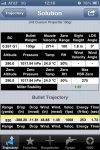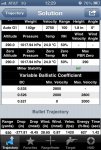Went shooting with a co-worker on Saturday. My rifle is a rem 700, 20" barrel, Rock Solid stock, 12x SWFA scope...
I confirmed my zero at 100 yards using remington 100 grain softpoints (cheap ammo till i start reloading)
Gun was pulling solid 3/4" moa groups at 100 yards...
From there we tried to stretch it out to 930 yards. It was a little hard to spot the hits on the hillside because there was tall wet grass however it seemed like the hits were all over. The target was a 20"x20" steel plate, but the shots were varying from 6' off to the 2 o'clock to 6' off to the 9 o'clock.the rounds were chronoing at 2714 fps and i think they were going trans sonic between 900 and 930 yards. Wind was alternating between 2-4 mph and changing from 90° to 220°
So, would the rounds going trans sonic cause the huge variation of impact points?
I would think if i could hold sub moa at 100 yards, i could at least get on target at 900
Fwiw, i was hitting a 900 yard plate the weekend before at a different range
I confirmed my zero at 100 yards using remington 100 grain softpoints (cheap ammo till i start reloading)
Gun was pulling solid 3/4" moa groups at 100 yards...
From there we tried to stretch it out to 930 yards. It was a little hard to spot the hits on the hillside because there was tall wet grass however it seemed like the hits were all over. The target was a 20"x20" steel plate, but the shots were varying from 6' off to the 2 o'clock to 6' off to the 9 o'clock.the rounds were chronoing at 2714 fps and i think they were going trans sonic between 900 and 930 yards. Wind was alternating between 2-4 mph and changing from 90° to 220°
So, would the rounds going trans sonic cause the huge variation of impact points?
I would think if i could hold sub moa at 100 yards, i could at least get on target at 900
Fwiw, i was hitting a 900 yard plate the weekend before at a different range





